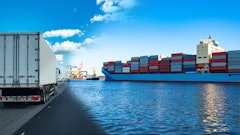
The GEP Global Supply Chain Volatility Index rose to -0.12 in January from -0.44 in December, its highest level since last April, indicating that spare capacity across global supply chains has shrunk notably.
“The world’s supply chains got busier in January, and activity at our global manufacturing clients is ticking up,” says Daryl Watkins, senior director, consulting, GEP. “With input demand trending higher, led by Asia, signaling a return to positive growth in the coming months, it is imperative business keeps tamping down suppliers’ price increases, so inflation continues to trend down.”
Key takeaways:
- The index suggests that underlying trading conditions may be starting to improve as recession and inflation fears fade and businesses prepare for a stronger 2024.
- The most noteworthy impact from the Red Sea disruption was to transportation costs, which rose to a 15-month high in January, as commercial ships took the lengthier route around the Cape of Good Hope. There was also a slight pickup in safety stockpiling, with reports from businesses of inventory building due to supply or price fears at the highest since last June. That said, they were well below the levels seen in 2021-2022 during the post-pandemic supply crunch.
- Regionally, Asia’s supply chains were at their busiest in nearly a year as factory purchasing activity in China, South Korea, and India, rebounded, suggesting manufacturers gearing up for growth. In a similar vein, suppliers to North America and Europe saw their spare capacity shrink during January. Less slack was also seen for the UK’s suppliers, who have experienced subdued demand for 19 consecutive months.


























